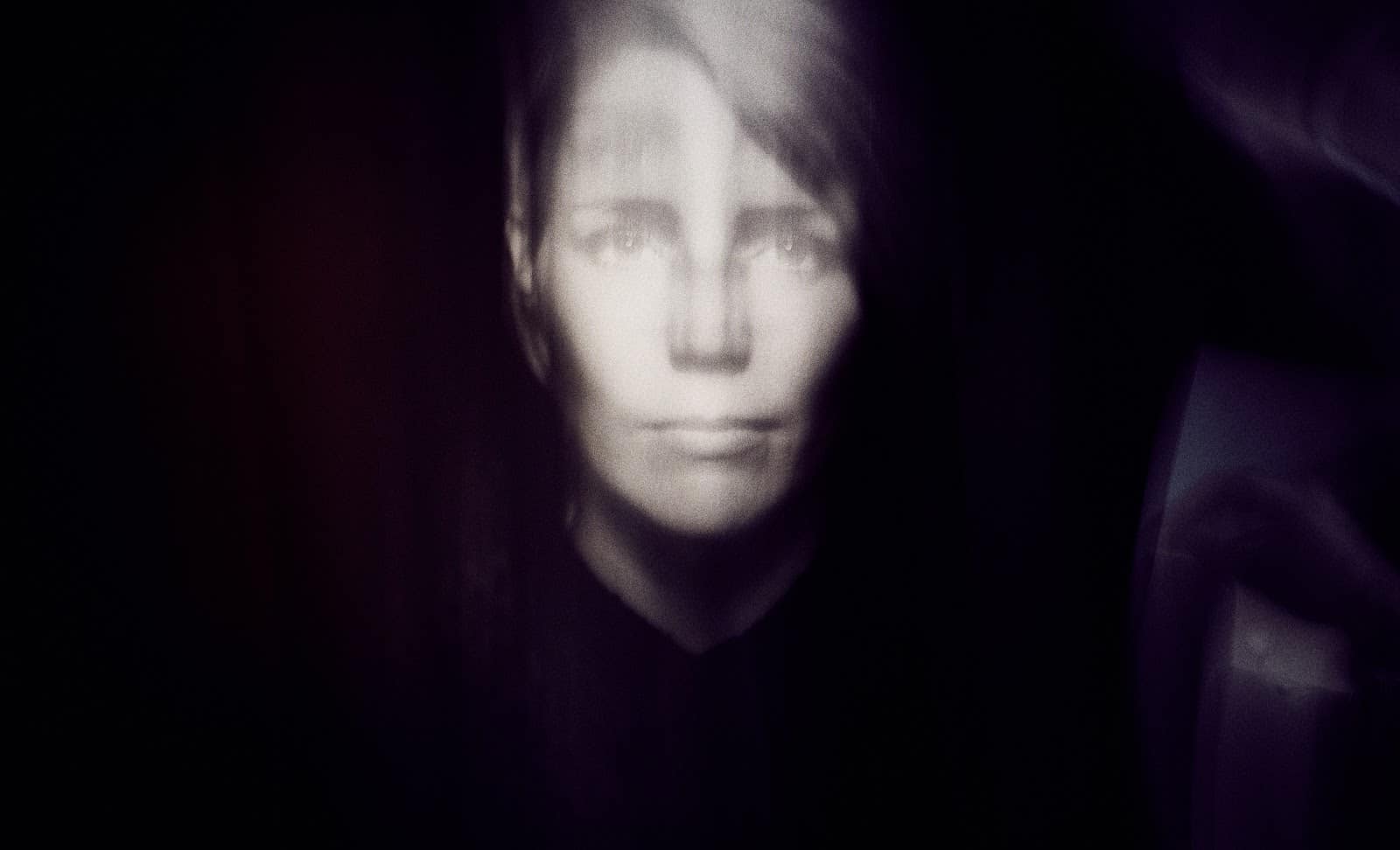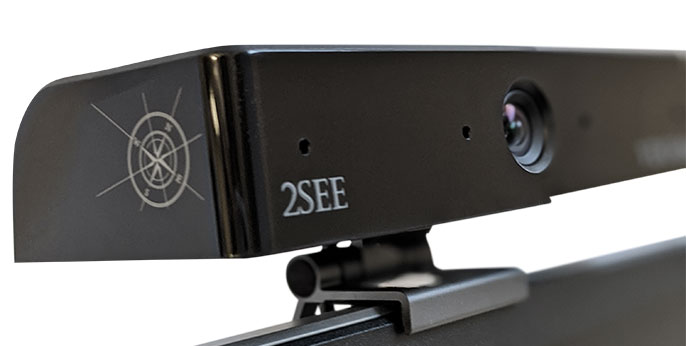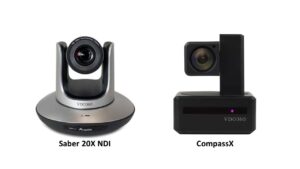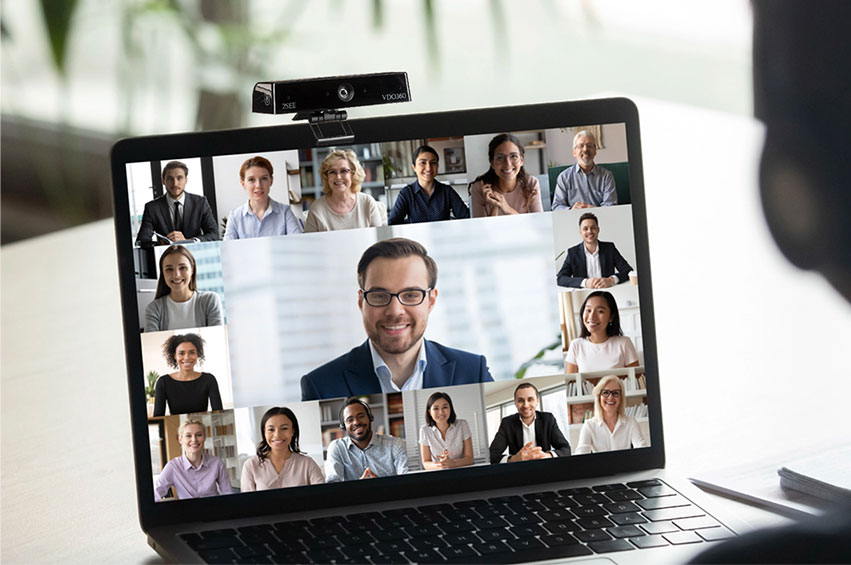What to Look for in a USB Camera
People use USB webcams for different things, from school to work to socializing; even non-USB webcams are on the table to tack onto your computer. Having the right USB webcam is more important than ever with quarantine and remote work edging on. Like other tech add-ons, spotting what works best for you can be difficult.
One of the best options for a small USB Webcam is the NavAI. Its compact design packs all the features of a modern webcam, including a customizable FOV and auto light. The SeeME is a popular plug-and-play option and has been used by YouTubers.
Before entering the virtual store and picking what looks fanciest or cheapest, consider what you will use the USB webcam for. From there, you can focus on the qualities most appropriate for you, like the lens, how the webcam mounts, privacy security, how it deals with lighting, the field of view, microphone quality, and the resolution. All of these elements are ones you must consider before purchasing a USB webcam. Still, it’ll be challenging to think it through without knowing how it’ll be used.
Let’s break down shopping for a USB webcam and ensure you’re buying the right one.
The New Remote World
USB webcams or not, almost everyone needs one now. It wasn’t too long ago that it was just a fun little addition to your computer for games or long-distance friendships. With COVID-19 keeping people home longer and many companies moving jobs to be permanently remote, webcams are now a must-have tech.
Like buying a computer, a USB webcam is a digital tool to make leisure and work more accessible. In this new remote world, you can’t afford to have a spotty picture or worry about a new device being a backdoor to cyber criminals. Think of having a poor USB webcam as having a lousy computer screen or WIFI connection. Just makes everything more complicated.
9 Things to Look for in a USB Webcam
No matter what you’re using the webcam for, these are the most important things to pay attention to. Though how they apply specifically may change.
Resolution & FPS
One of the most recognized specs of a USB webcam’ is it’s resolution. It’s an essential factor when using it for video conferencing, remote learning or personal webcam use. In short, the higher the resolution, the better the image quality.
Resolution is essentially the clarity of the picture captured. A clear picture is best, no matter what you’re using the USB webcam for. Perhaps especially if you’re using it for work or remote teaching. It’s important to note that frame rate and resolution are tied to a clear picture for digital video.
A standard webcam has 1080p, which is decent, but nothing beats 4K. That’ll give you the clearest picture possible with your USB webcam.
Clear as a bell. Frames per minute also play a role in determining how clear the video is. You should aim for 60 fps For frame rate, you won’t want to go lower than 60fps (frame per second) as that’ll give you the most natural look in a video.
Field of View
This is one of those USB webcam features that depends much more on what you’re using it for than anything else.
A webcam’s FOV determines how much detail can be captured. A narrow FOV is perfect for capturing people’s faces, while a wide FOV helps record a conference room. Typically, usb webcams have fields of view of 65 to 90 degrees. A good middle ground is around 78 degrees
In short, a field of view is what the webcam can see, and the larger the field of view, the more is captured. Here is a basic rundown on a field of view:
- 60-degree FOV captures someone directly in front of the computer
- 78-degrees FOV can capture two people in front of the computer
- 90 degrees can capture a conference table and/or whiteboard for presentations
- Vertical video is capable of panorama shots.
Microphone Clarity
Whether you’re using a USB webcam for conferencing or for team conversation, it’s clear audio is critical for success.
Many USB webcams don’t have a built-in microphone, which isn’t a must-have. Although, if you’re not fond of keeping earbuds in all day or your computer’s microphone isn’t the best, there are things to look for in a webcam microphone.
When shopping for a USB webcam and wanting one with a microphone, look for small speakers like grilles on either side of the lens. Some are more for conversation while others are geared towards conference rooms or talking from a distance. Also, ones with built-in microphones will advertise as such and what they’re best used for.
Webcam Lens
One of the most essential elements of a USB webcam is the lens. Generally, there are two kinds: Glass and plastic lenses. Glass is more expensive but gives a much more excellent quality of picture or video, and plastic is cheaper but is sub-par.
- When looking at lenses, there are a few things to note:
- The bigger the lens, the better the picture
- The lens determines how much light reaches the sensor. In other words, the more light hits the sensor, the clearer you’ll be in low lighting.
- The lens ties into the field of view for your USB webcam and matters with framing. This is important for another point later on.
USB Webcam With Optical Zoom
While most computers have a built-in camera that can be useful for most situations, USB webcams with optical zoom can add additional functionality and better picture quality.
Optical zoom is an excellent feature for video conferencing. A webcam with 10x optical zoom can capture up to 20 participants in one video window. Auto focus features ensures clear images, even at high zoom settings. In addition, it can also be installed on any computer and is a easy to use small-form USB webcam.
If your looking for a webcam with 20x optical zoom, make sure to read more about our Saber20x NDI Webcam.
Mounting
Most webcams are designed to be mounted on your computer monitor or laptop. Though many USB webcams also have features for on the go to use. Suppose you’re using a webcam primarily for work reasons. In that case, it doesn’t matter if it has on-the-go abilities. Don’t feel like you have to pay extra for a webcam that is compact or compatible with mobile devices if you’re only using it to work from home.
Webcam Lighting
Lighting abilities on a USB webcam are fundamental, whether you’re using it for photos, conferences, or person-to-person video chat. Isn’t it annoying when all you can see is a dark blur while trying to have a conversation? The same goes for when it looks like you’re talking with someone made of bright light because of overexposure.
An excellent way to deal with potential lighting problems is to look for USB webcams with auto focus and low-light correction. Most webcams have auto-focus, but the higher-end models have better quality. If your home office doesn’t get the best light and you’d instead not string together a bunch of lamps, it’s best to invest in a USB webcam that can deal with that through internal tech or ring lights.
Webcam Privacy
Cybersecurity professionals know and talk about how smart devices can be gateways to the rest of your connected devices. That has more to do with your passwords and antivirus software than a USB webcam in and of itself. What matters here is that if you get hacked and your webcam is connected via USB or non-hardware, they can turn it on and look at you. No matter what you’re using your webcam for, make sure it comes with a lid and covers the built-in lens on your desktop or laptop.
If remote video meetings are of importance, a Zoom Certified USB Webcams are a versatile option for video calling and remote viewing. A Zoom-certified webcam is easy to install and operate on your computer. If the camera cannot connect to the computer, open the Zoom software and use the Troubleshoot option. It’s also helpful to close any other apps interfering with the webcam.
Remotely Seen Doesn’t Mean Blurry

This new remote world calls for technology once reserved for the more tech-heads, so shopping for a USB webcam may feel a little alien. If you stick to looking at the features outlined above, you will find the best webcam for your needs. Here are those 9 features you want to pay attention to again:
-
- Resolution & FPS: You want a clear picture; the higher the resolution, the clearer you’ll look. Likewise, frames per second (FPS) also play a vital role in streaming video.
- Field of View: The greater the field of view, the more your webcam sees around you.
- Microphones: Not a must but certainly a plus. Most USB webcams will advertise what their microphone technology is best for, from conversation to conferences or talking from a distance.
- Lens: Size matters for clarity
- Optical Zoom
- Mounting: Make sure it can fit your computer
- Lighting: Consider the lighting in whatever room you’ll be using the webcam in
- Privacy: Don’t let hackers use your USB webcam against you
- Zoom Certification
It has been said a few times, but it’s important to repeat. First, consider what you’ll be using it for, telling you what technology you need. Don’t just splurge on a fancy USB webcam. You don’t want to end up with 80 bells and whistles you’ll never use; it’s just a waste of money.
Shop smart and spend wisely. That’s the best advice to hear, no matter what you’re in the market for. Now that you know what to pay attention to when eyeballing USB webcams, you’ll be able to save money and work better. After all, just because you’re working or learning remotely doesn’t mean you can’t have a clear connection to the office or classroom. For more tips, Read on to learn how to set up your own influencer space
VDO360’s USB webcams come in a variety of price ranges and resolutions. Some models are high-definition (HD) and can connect to a wireless Internet connection. Others can stream content to a website or company intranet.




